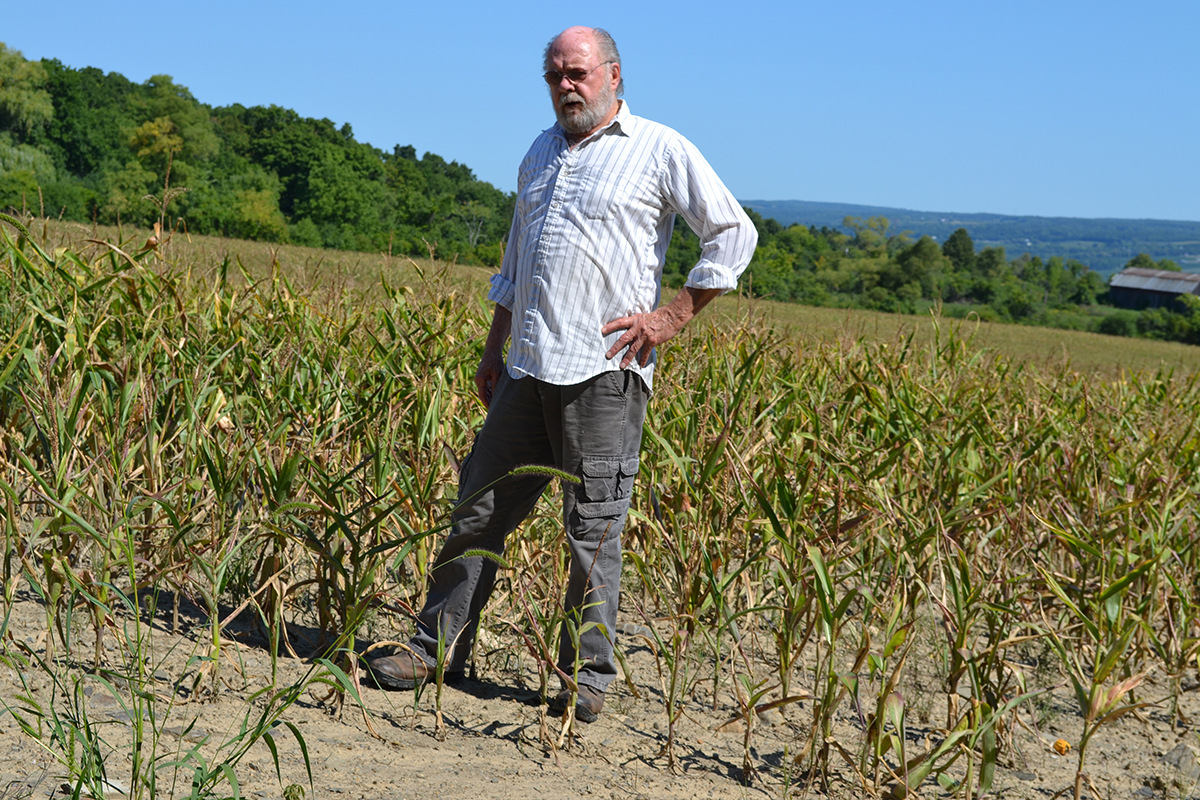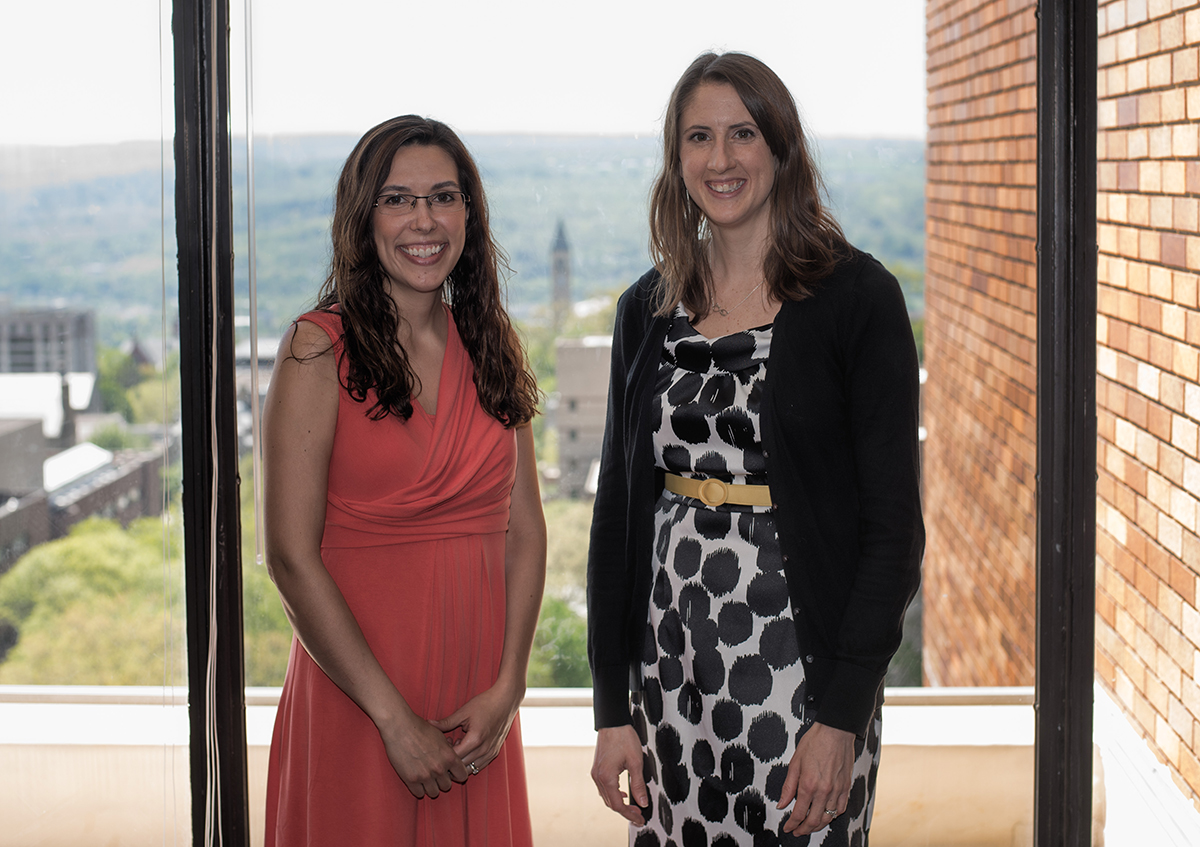Cornell climate center at front line of drought response

For more than a year, as drought spread across the Northeast, agricultural fields went parched, crops withered, wells ran dry. During the worst drought since the 1960s, irrigated farms in the Northeast suffered crop losses of up to 35 percent; for unirrigated farms, field crops and pasturage losses hit as high as 90 percent across the 12 states in the region.
The drought – which started in April 2016 – was declared officially over this month, but its financial impacts may last much longer.
“This drought had a big impact on agriculture, especially as it struck right during the growing season,” said Jessica Spaccio ’04, climatologist with Cornell’s Northeast Regional Climate Center(NRCC). “Being in the Northeast, water is usually plentiful, so there aren’t a lot of irrigation systems in place like in California where droughts are common.”
For 35 years, the NRCC, housed in the College of Agriculture and Life Sciences, has been helping farmers and policymakers adapt to the weather. Led by director Art DeGaetano, professor in the Department of Earth and Atmospheric Sciences, the NRCC monitors climatic conditions and shares the information with the public, part of its mission to inform and apply climate research for economic efficiency and the public interest.
Because scientists anticipate climate change will cause an increase in extreme weather, including more frequent flooding and droughts, the work of the NRCC is proving even more indispensable, according to DeGaetano.
Mission to serve
The NRCC bridges information between national agencies like the U.S. Drought Monitor and the U.S. Geological Survey, and the public and private stakeholders whose livelihoods depend on having access to reliable climate data.
For example, the Drought Monitor creates the standards and designations for drought categories nationwide, and USGS monitors groundwater wells to see whether precipitation is restoring underground aquifers or running off into lakes and streams.
The climatologists at the NRCC – Spaccio, Samantha Borisoff and Keith Eggleston – take that data and translate it for individuals, businesses and government agencies who have problems to solve.
“We take phone calls and emails from anyone who has a question related to climate data,” said Spaccio. “This could be anything from someone at a law firm or an insurance agency dealing with a claim for an accident on a slippery road, to someone at another university doing research, to someone in the agriculture community looking at manure storage, to health agencies working on mosquito control.”
The NRCC partners with groups across Cornell to aid research and develop products to meet extension needs. The NRCC maintains ongoing collaborations with the New York State Integrated Pest Management Program, the New York State Water Resources Institute, the Cornell Institute for Climate Smart Solutions and others.
Responding to drought
An unusually mild winter in early 2016 left snowpacks in the Northeast far below average. As spring came, elevated temperatures and reduced rain stressed plants at the start of the growing season. By July, the New York Department of Environmental Conservation put the entire state on drought watch, and many counties in the hard-hit Finger Lakes and western New York regions were declared natural disaster areas.
NRCC climatologists hold weekly phone calls with Cornell Cooperative Extension agents throughout the growing season. During the height of the drought, this network of experts worked to ease the drought’s impact on farmers.
“The drought was a good test for the climate center,” said DeGaetano. “It demonstrated the staff’s nimbleness in designing and implementing new and expanded websites, coordinating and developing workshops and webinars, and distributing frequent updates to stakeholders concerned with the drought’s status.”
Working with Cornell’s Climate Smart Farming group, the NRCC helped create a tool called the Water Deficit Calculator, which gave farmers estimates of the soil water content accessible by crops.
“Part of the work we do is focused on helping people prepare so they can respond more effectively to whatever the weather is going to do,” Borisoff said. “Another part is providing context. When people are struggling and crops are failing, we can say, ‘Yes, it is really bad. It’s the worst drought we’ve had since the 1960s.’”

The drought was just as severe in some parts of Massachusetts, Connecticut and New Hampshire. Some municipalities placed restrictions on water use, while people on private wells saw their water run dry.
“Fisheries folks were concerned – the water levels in certain parts of rivers were so low that fish were getting stuck and a few rivers had to be closed to fishing in order to protect the fish,” Borisoff said. “Firefighters were being impacted because the dry conditions led to fires that were harder to put out.”
In the aftermath of the worst drought in 50 years, climatologists across the Northeast are working to figure out how they can improve response to the next drought. This could include improving top-down communications, such as creating a drought early warning system, as well as strengthening bottom-up information sharing, such as crowd-sourcing water data from farmers and people on private wells.
“We expect with climate change to see these short-term droughts occur more often,” Spaccio said. “All it takes is one season, and especially when it hits during the growing season, to have big impacts.”
This article is written by Kris Gassier and was originally published in the Cornell Chronicle on May 23, 2017.
